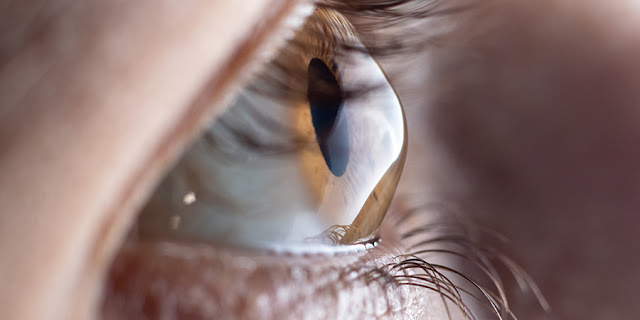C3R - Treatment For Keratoconus - Keratoconus is a non-inflammatory, self-limiting ectasia of the axial portion of the cornea.
Keratoconus is a non-inflammatory, self-limiting ectasia of the axial portion of the cornea. It is characterized by progressive thinning and steepening of the central cornea. As the cornea steepens and thins, the patient experiences a decrease in vision which can be mild or severe depending on the amount of affected corneal tissue.
 |
| C3R - Treatment For Keratoconus |
Typically, vision loss can be corrected early with spectacles; later, irregular astigmatism requires optical correction with rigid contact lenses. Contact lenses provide a uniform refracting surface and therefore improve vision. Contact lenses can improve vision, however can also scar the cornea. Patients should be informed upon diagnosis that they will likely require contact lenses eventually.
C3R - Treatment For Keratoconus
The latest revolutionary Keratoconus treatment is C3R (Corneal Collagen Crosslinking with Riboflavin) that has been proven to strengthen the weak corneal structure & by increasing collagen crosslinking, which are the natural “anchors” within the cornea. These anchors are responsible for preventing the cornea from bulging out and becoming steep and irregular, a consequence of advanced Keratoconus.
WHAT IS COLLAGEN CROSS-LINKING?
Collaged cross-linking is a new treatment for keratoconus which uses a photosensitizing agent, riboflavin (Vitamin B2) & ultraviolet light (UVA, 365 nm) exposure. Ultraviolet light is used to promote increased cross-linking between collagen fibers within the cornea.
Also Read:- Lasik Eye Hospital in Ahmedabad
This less invasive procedure leads to rapid recoveries and reduces the risks of sight-threatening complications like hemorrhaging, infection, and wound rupture.
HOW IS THE TREATMENT DONE?
The treatment is performed under topical anesthesia. The skin (epithelium) of the surface of the cornea is partially scratched, followed by the application of Riboflavin eye drops for 30 minutes. The eye is then exposed to UVA light for 30 minutes. After the treatment, antibiotic ointment is applied and an eye pad is worn overnight until the next day when the surface of the eye has healed. Oral analgesics are required for the first 1-2 days.
A common disease that can cause damage to this inner layer of the cornea is Fuchs' Corneal Dystrophy. This inherited eye disease causes the cornea to swell opacify and distort vision.
IS ULTRAVIOLET LIGHT HARMFUL?
Ultraviolet light used in this procedure is not harmful to the eye in measured doses. The light-emitting diodes used in the C3-R device are of a wavelength that is not harmful. Furthermore, light emission is carefully measured and calibrated prior to each treatment.
IS ULTRAVIOLET LIGHT HARMFUL?
DSAEK is an outpatient procedure. No hospitalization is required. The entire surgery, including prepping the eye, usually takes between 45 and 60 minutes.
HOW OFTEN WILL I NEED TO BE FOLLOWED?
You will be seen soon after the procedure to remove the contact lens and you will remain on eye drops for a few weeks. You will be seen at 1 month, 3 months, 6 months, and one year. Following this, it is important that you be seen on an annual basis.
WHEN CAN I WEAR CONTACT LENSES AGAIN?
You may return to wearing lenses after one month. Your lenses may need to be changed if your cornea changes shape.











COMMENTS